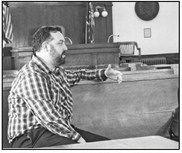Pay board members set salaries rather than per diems
Star News
Editorials
As part of cost-cutting measures and to improve efficiency, Taylor County needs to look to a salary model for the county board with a streamlined committee structure rather than only paying board members for the meetings they attend.
Between January 6, 2022 and December 22, 2022, Taylor County taxpayers paid out more than $86,200 meeting pay and expenses for county board members.
With expansion of the committee membership that took place following last April’s reorganization meeting, the per diem expense is likely to be even greater by the end of 2023.
While the total amount is significant, especially in light of the county board’s stated goal to cut $500,000 from the overall budget, it comes out to an average of just under $5,000 for the 16 general members. The county board chairman receives a slightly higher base rate to reflect his additional responsibilities.
County elected officials, along with members of all other elected boards, should be fairly compensated for the time and effort they put into serving their constituents. It would be unfair to expect otherwise. The question is if the per diem system is the way to go about that.
Government isn’t piecework and it is time to stop compensating board members as if the only time they are working is during a posted meeting. A county board member must be available and willing to address constituent concerns whenever they arise and must likewise be willing to do their homework on issues and concerns outside of meetings. By and large, board members are meeting with constituents and gathering information on their own time, but without a formally called meeting get no compensation for that work. In addition, there is a disparity between committees which meet frequently and those which do not, despite the board members having similar obligations and responsibility to voters.
Taylor County should follow the lead of other counties and move toward a salary model, where board members would get a set compensation regardless of the number of meetings they may have to attend. Such a model would contain costs while serving as a discouragement for excessive numbers of meetings. This could be accomplished at the meeting side through the consolidation of oversight functions into fewer standing committees — such as was done with the combination of the largely overlapping finance and personnel committees.
At a time when the county is looking under every proverbial seat cushion for a place to find revenue or identify budget cuts, elected officials must be willing to look at their own compensation and move toward a system where supervisors’ pay isn’t directly tied to the number of committees they are serving on or the volume of meetings they attend.




